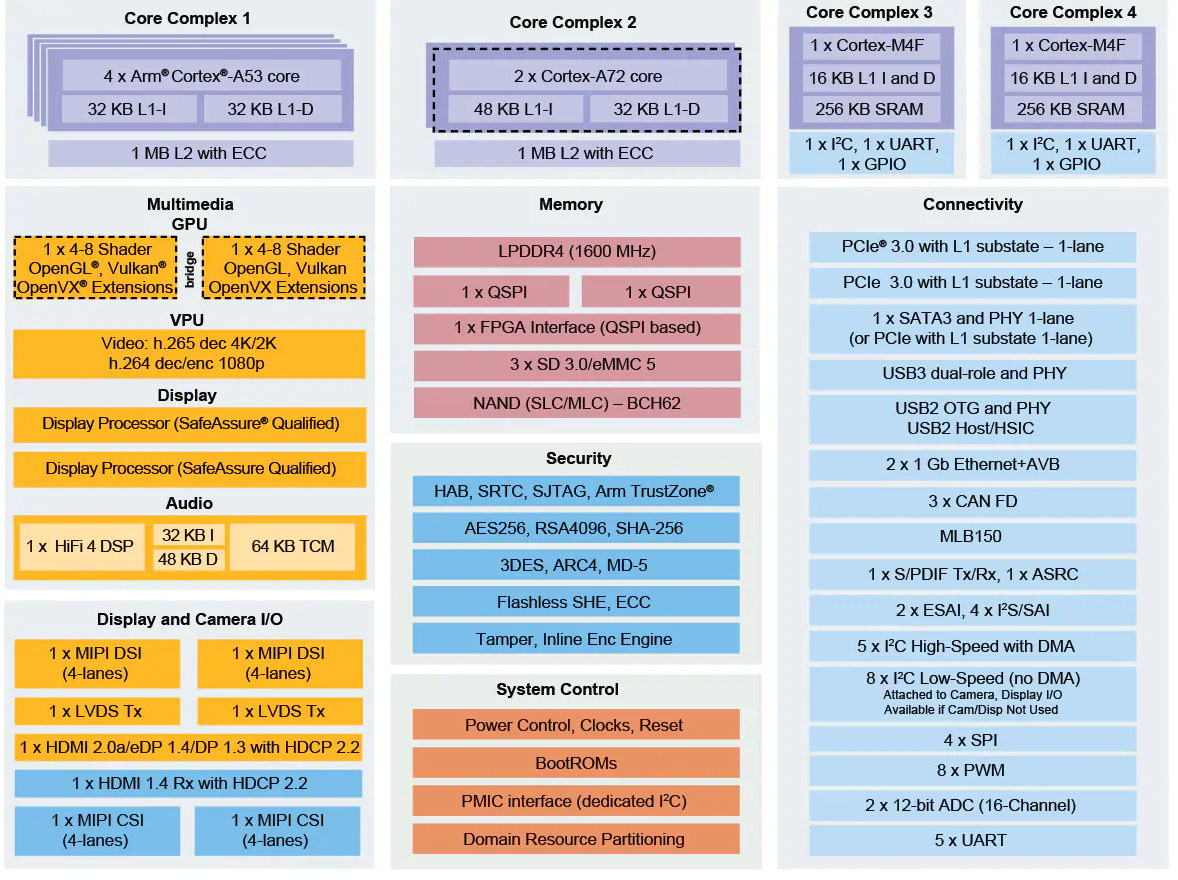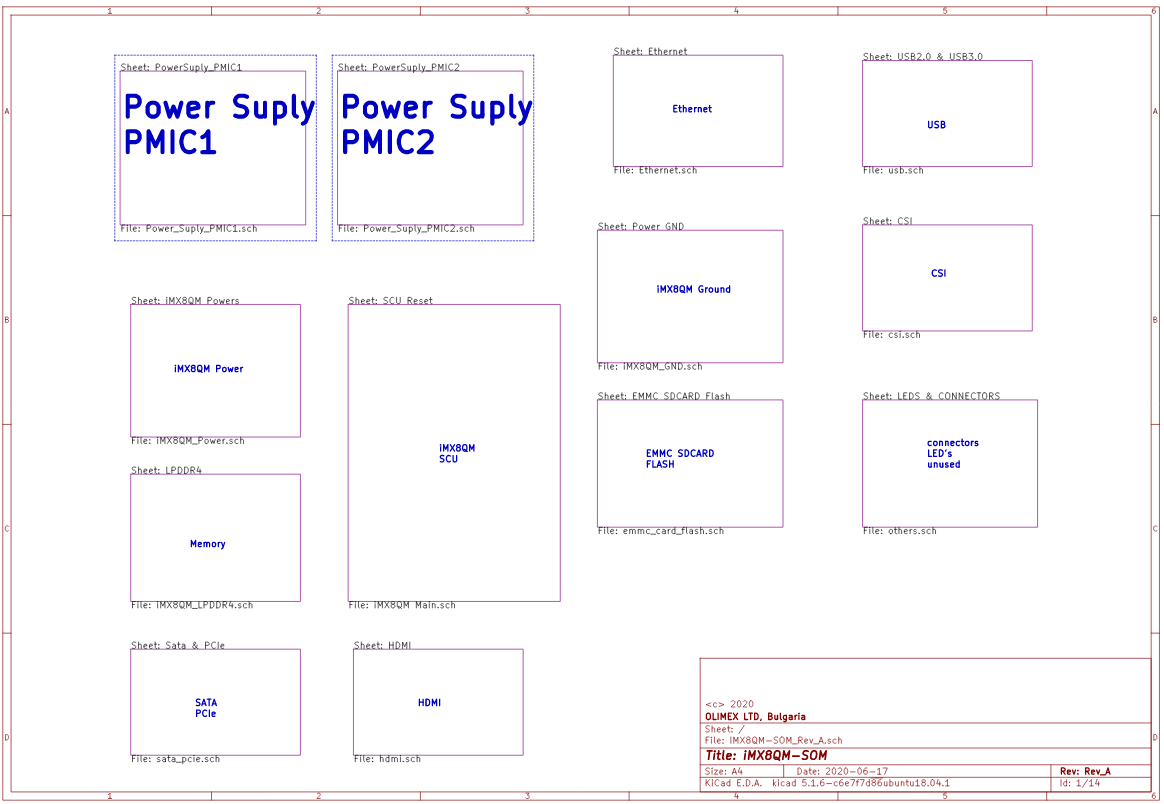[Update: The European company that initiated the project is Ignitial based in the west of France. So while we refer to the board as Olimex Tukhla in the post, it will be offered as Ignitial Tukhla once it becomes available]
Most open-source hardware Arm Linux SBCs are optimized for cost, and there are few higher-end boards with extensive connectivity designed for professionals. Beagleboard X15 would be one of the rare examples currently available on the market, but it was launched five years ago.
One European company noticed the void in this market and asked Olimex to develop a high-end open-source Linux board with a well-documented processor. They ruled out RK3399, and instead went Olimex Tukhla SBC will be powered by NXP i.MX 8QuadMax, the top processor of i.MX 8 family with two Cortex-A72 cores, four Cortex-A53 cores, and two real-time Cortex-M4F cores.
As you can see from the screenshot above, Olimex created the schematics in KiCad, and contrary to most (all?) other Cortex-A72 Arm Linux SBC from Korean or Chinese company who don’t usually release schematics (except PDF for some project), Olimex Tukhla will be fully open-source hardware with KiCad schematics eventually release (now only the PDF schematics are available at this time).
Preliminary specifications for Olimex Tukhla board:
- SoC – NXP MIMX8QM5AVUFFAB octa-core processor with dual-core Cortex-A72, quad-core Cortex-A53, dual-core Cortex-M4F, 4x GPUs with 16x Vec4-Shader GPU, 32 compute units, OpenGL ES 3.2 and Vulkan® support, 4K H.265 Decode, 1080p h.264 encode)
- System Memory – 2x LPDDR4 32-bit RAM up to 16GB of RAM
- Storage – eMMC flash of various capacity, QSPI flash, SATA port, 2x M.2 PCIe/NVMe sockets, MicroSD card slot
- Video I/O
- HDMI 2.0 output with HDCP 2.2 up to 4K resolutions
- HDMI 1.4 input with HDCP 2.2
- Camera I/F – 2x MIPI CSI camera connectors
- Networking – Dual Gigabit Ethernet
- USB – USB 2.0 OTG, USB 3.0 host
- Power Supply – 12V/4A

This is still very early in the design since they’ve only drawn the schematics for now (I took one month), and for such a complex board, development will take a lot of time to complete meaning it will likely only become available sometimes in 2021.
The board will also clearly target professionals who require an open-source hardware design, as Olimex explains the processor alone sells for around 100 Euros to which you need to add RAM and other components. That means the BoM (bill-of-materials) cost will be over 200 Euros, and retail price likely well over 300 Euros.

Jean-Luc started CNX Software in 2010 as a part-time endeavor, before quitting his job as a software engineering manager, and starting to write daily news, and reviews full time later in 2011.
Support CNX Software! Donate via cryptocurrencies, become a Patron on Patreon, or purchase goods on Amazon or Aliexpress





